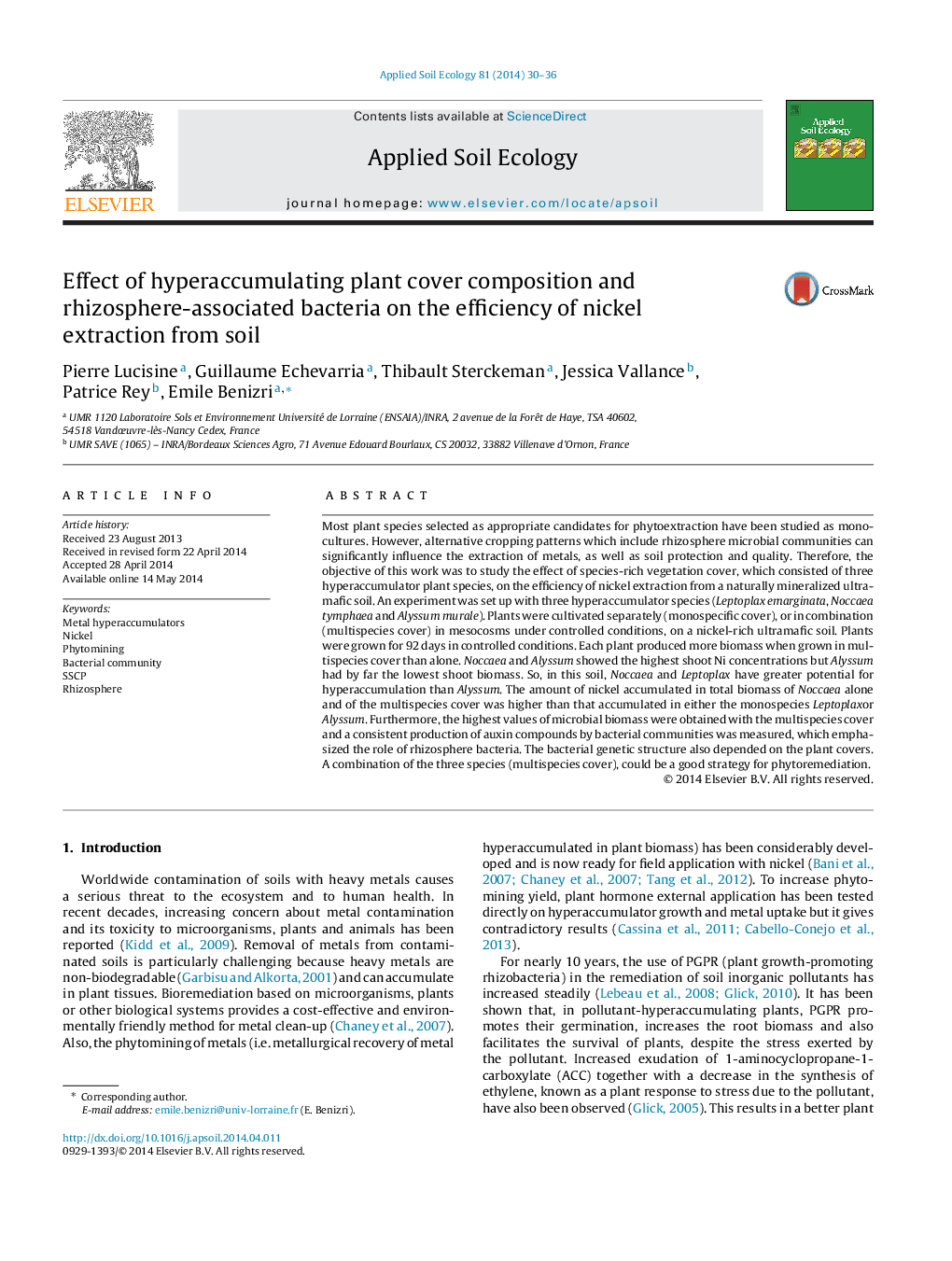| Article ID | Journal | Published Year | Pages | File Type |
|---|---|---|---|---|
| 4382081 | Applied Soil Ecology | 2014 | 7 Pages |
•No previous study of multi-hyperaccumulator species cover on rhizosphere bacteria.•The highest values of microbial biomass were obtained with the multispecies.•The bacterial genetic structure depended strongly on hyperaccumulator plant cover.•Amount of Ni accumulated by multispecies was higher than species grown separately.
Most plant species selected as appropriate candidates for phytoextraction have been studied as monocultures. However, alternative cropping patterns which include rhizosphere microbial communities can significantly influence the extraction of metals, as well as soil protection and quality. Therefore, the objective of this work was to study the effect of species-rich vegetation cover, which consisted of three hyperaccumulator plant species, on the efficiency of nickel extraction from a naturally mineralized ultramafic soil. An experiment was set up with three hyperaccumulator species (Leptoplax emarginata, Noccaea tymphaea and Alyssum murale). Plants were cultivated separately (monospecific cover), or in combination (multispecies cover) in mesocosms under controlled conditions, on a nickel-rich ultramafic soil. Plants were grown for 92 days in controlled conditions. Each plant produced more biomass when grown in multispecies cover than alone. Noccaea and Alyssum showed the highest shoot Ni concentrations but Alyssum had by far the lowest shoot biomass. So, in this soil, Noccaea and Leptoplax have greater potential for hyperaccumulation than Alyssum. The amount of nickel accumulated in total biomass of Noccaea alone and of the multispecies cover was higher than that accumulated in either the monospecies Leptoplaxor Alyssum. Furthermore, the highest values of microbial biomass were obtained with the multispecies cover and a consistent production of auxin compounds by bacterial communities was measured, which emphasized the role of rhizosphere bacteria. The bacterial genetic structure also depended on the plant covers. A combination of the three species (multispecies cover), could be a good strategy for phytoremediation.
